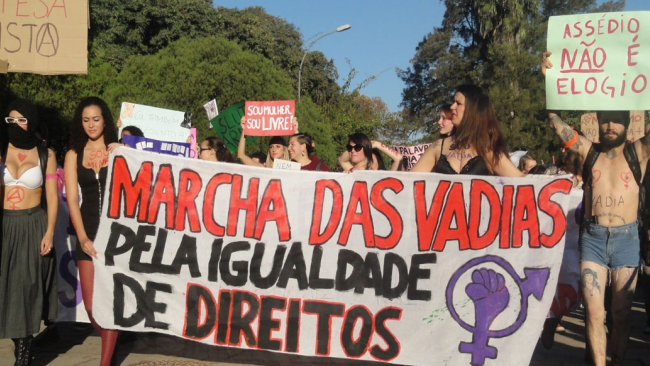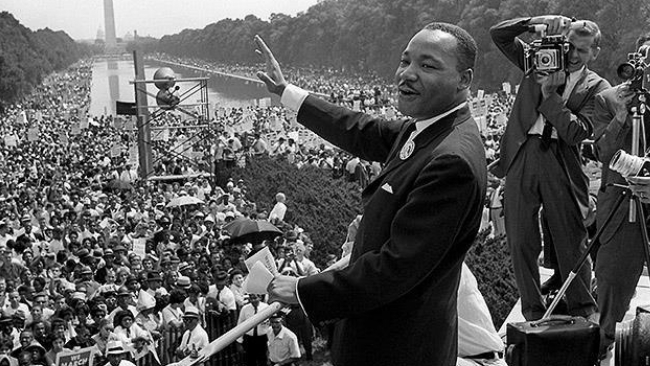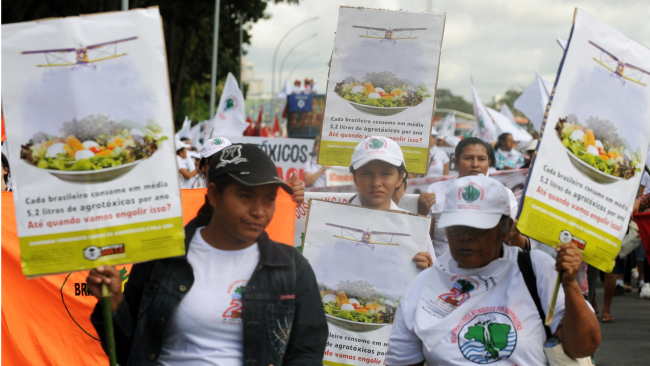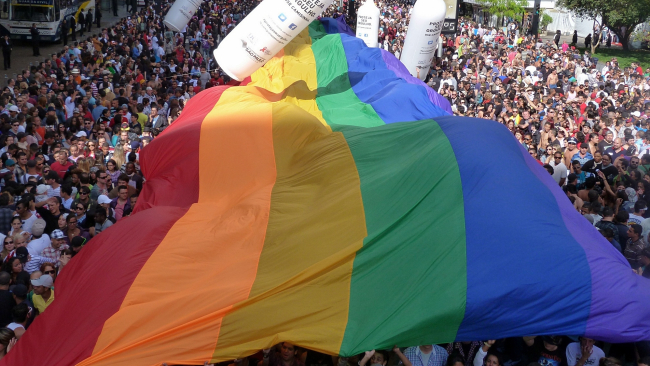Social movements can take place in local, national or even global territory. Below we list some of the best known social movements around the world.
1. Feminist Movement
The feminist movement, also known as the women's rights movement, is characterized by being a structural social movement, that is, that seeks to deconstruct machismo in the long term, an aspect present in the social structure. This movement had its beginnings in the period of the French Revolution.
First wave feminist movements of the 19th and early 20th centuries focused on women's legal rights, especially the right to vote.
In the 1960s and 1970s, the second wave of feminists, which emerged in the United States, sought equal rights and opportunities between men and women and greater personal freedom for women.
This second wave touched all areas of women's personal and social lives - including politics, work, family and sexuality.
Activism organized by and on behalf of women continues to this day, spreading across global territory. Your biggest goal is end gender inequality.
An example of the manifestation of the feminist movement was the Marcha das Vadias, which began in Toronto, in 2011, and spread throughout the world.
In Brazil, the Marcha das Vadias gained momentum in 2014, and was focused on protesting the right of women to wear clothes and behave in the way they want.
 Feminist movement titled "March of the Sluts" in 2014.
Feminist movement titled "March of the Sluts" in 2014.
2. black movement
The black movement, also known as the american civil rights movement, was a mass protest movement against racial segregation and discrimination in the southern United States that gained national prominence in the 1950s.
This movement had its roots in African slaves and their descendants, and was aimed at resist and fight racial oppression and abolish the institution of slavery, so its strong characteristic is that it is a structural movement.
Through nonviolent protests, the civil rights movement of the 1950s and 1960s broke the pattern of public facilities that promoted segregation by “race” in the southern United States. Thus, they achieved an important advance in equal rights legislation for African Americans.
Although the passage of civil rights legislation was successful for the movement, black activists began to understand their struggle as a freedom movement.
As a result, they were not just seeking civil rights reforms, but faced the long-lasting economic, political and social crisis and cultural consequences of past racial oppression.
As it is a structural movement, demonstrations against racism continue in various parts of the world. In May 2020, after the death of George Floyd, a black American killed by police officers, dozens of protests spread across the United States.
In Brazil, similar protests took place after the death of João Alberto Silveira, who was killed by a security guard at a large supermarket chain.

See too The 5 most important moments in the fight against prejudice and racism.
3. student movement
Student activism is the path used by students in favor of political, environmental, economic or social change. Though often focused on schools and universities, student groups have always influenced major political events.
Its greatest feature is to be a transformation movement, for claiming new rules and achievements.
Student activism is constantly associated with left-wing politics, as right-wing student movements are not common. Large groups of students fought against apartheid in South Africa, for example.
Student activism at the university level is almost as old as the university itself. Students in Paris and Bologna, for example, organized collective actions in the early 13th century, mainly on issues of the city itself.
In the United States, student unrest took on political connotations during the American Revolution (1765 - 1783). In the late nineteenth century, many American students embraced the new theories of socialism and communism and began to place these postulates in their movements.
Already in Brazil, the student movement gained strength in the 1970s, with student unions against the military regime.
Brazilian students took part in large demonstrations against the system and political decisions. One of the most famous was the demonstration known as Caras-pinatadas, in 1992. A large student movement that called for the impeachment of then president Fernando Collor.
Brazilian students and student movements have the support of large non-governmental organizations such as the DCEs (Student Central Directories), the UEEs (State Student Unions) and the UNITE (National Union of Students).
 Student Movement in Brazil: Painted Faces, 1992.
Student Movement in Brazil: Painted Faces, 1992.
4. Labor (or Labor) Movement
In the nineteenth century there was a great increase in the number of unemployment and social marginalization, a set of consequences of the then Industrial Revolution. It is known to be a traditional movement that fights for classes.
It was in this context of precarious working conditions that the first social movements of workers emerged.
During this period, the main movements were:
- Ludism or Ludist Movementa: Believing that machines were taking men's jobs, workers created the Luddist movement, a mass destruction of machines. This movement demonstrated the discontent of the workers with the machines, which started to replace a good part of the manual work;
- Chartism: also known as the "People's Letter", Chartism has its origins in England. Its objective was to claim a political space in the State for the interests of workers, in addition to wage increases and good working conditions;
- unionism: the main objective of this movement is to demonstrate that unions must defend and govern the rights of workers against political power. This movement lasted from the 19th century until the 20th century.
To claim their interests and rights, workers demonstrated through strikes. This episode was very common in the nineteenth century, in the working classes of large factories.
In Brazil, one of the greatest manifestations of the labor movement was the 1917 strike, in which thousands of workers demanded better working conditions and wage increases.
5. Environmentalist Movement
Also known as the Ecological Movement or the Green Movement, it is characterized in the so-called "new social movements" and comprises different currents in favor of environmental preservation.
Its biggest demand is environmental protection to promote a sustainable and quality life. It is characterized by being a transformation movement, which aims to improve the relationship of people and companies with the environment.
In 1970, environmentalism spread rapidly around the world, giving rise to numerous influential groups such as the Chipko Movement in India and Greenpeace, founded in Canada in 1971.
From the 1980s on, environmentalism multiplied and established the importance of environmental education for a general change in habits. In addition to fighting the well-known environmental challenges such as:
- pollution;
- intensive use of pesticides;
- logging;
- the loss of biodiversity;
- overhunting and illicit trade in wild species;
- uncontrolled urbanization;
- depletion of water resources;
- genetic manipulation, global warming.
In Brazil, the environmental movement gained strength in 1950, and began to gain support from NGOs such as the Natural Environmental Protection Union and the Brazilian Foundation for Nature Conservation.
 March in favor of the Permanent Campaign against Pesticides and for Life, held in Brasília, in 2011.
March in favor of the Permanent Campaign against Pesticides and for Life, held in Brasília, in 2011.
See also the 7 ways to help preserve the environment.
6. LGBTQIA+ Movement
The social movement LGBTQIA+ (acronym that means: Lesbian, Gay, Bisexual, Transvestite, Transsexual, Transgender, Queer, Intersex, Asexual and more) emerged in Europe in the 20th century.
It is a structural movement that fights homophobia and violence against homosexuals and LGBTQI+ couples.
In Brazil, the movement was born in the late 1970s, predominantly formed by homosexual men. On its agenda, the movement fights for civil rights that defends equal rights for the entire LGBT community.
Some of the main goals of the movement are:
- Elimination of laws prohibiting homosexual acts between consenting adults;
- Fight against homophobia and violence against homosexuals;
- Ending discrimination against gays and lesbians in employment;
- Release of credit loans, housing, public accommodation and other areas of life that are prohibited in many countries;
- Criminalization of homophobia.

What are Social Movements?
Social movements are collective actions of a group of individuals who defend and fight for some cause or for a common goal, whether to transform or seek to maintain something within a society.
This action has a political or social demand, which may be against or in favor of the State. Regardless of the movement, it always has an agenda, that is, a purpose to defend.
Social movements emerged as a consequence of the French Revolution and the Industrial Revolution, even in the 19th century. With the increase in unemployment, low wages and marginalization, groups of workers began to claim labor rights.
The social movements of the time were then understood as the proletariat against the bourgeoisie. However, after the second half of the 20th century, the so-called "new social movements" began to emerge to demand different models of social change.
Types of social movements
Social movements can act in different areas. The best known are labor, environmental, political, racial, gender, among others.
In other words, any group of people that defends, fights and supports a cause is considered a social movement when manifesting itself through its agendas. However, social movements can be characterized in different ways:
- transformation movement: are created to modify some political or social aspect through demands;
- conservation movement: this type of social movement appears to maintain some political or social aspect;
- traditional movements: occurring mainly in the 19th century, after the Industrial Revolution, these movements have themes aimed at social classes, with a great struggle between the proletariat and the bourgeoisie;
- new moves: they are those who have class issues in their struggle, but their main agenda is of an identity nature, that is, they are minorities that ask for representation and voice within society;
- conjunctural movement: are those that appear at a juncture. It is a movement that is organized and structured according to an instant demand, in a specific situation;
- structural movement: is one that has demands and goals that will be achieved in the long term. In other words, it demands a complete change in the social structure. An example of a structural movement is the black movement, against racism.



